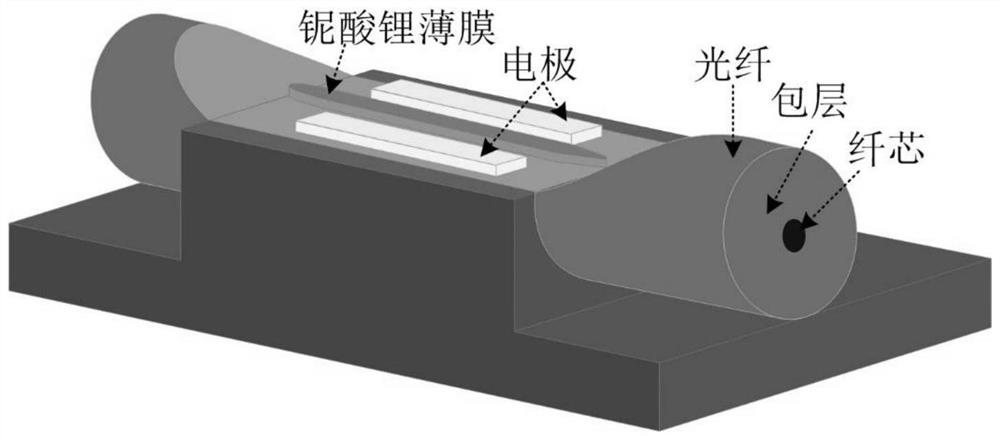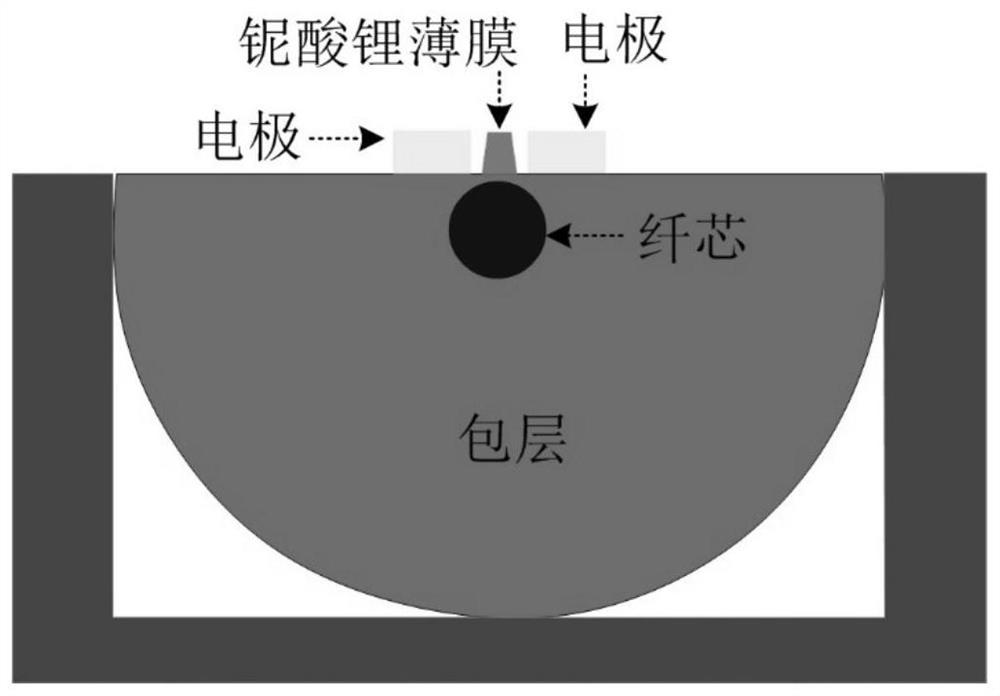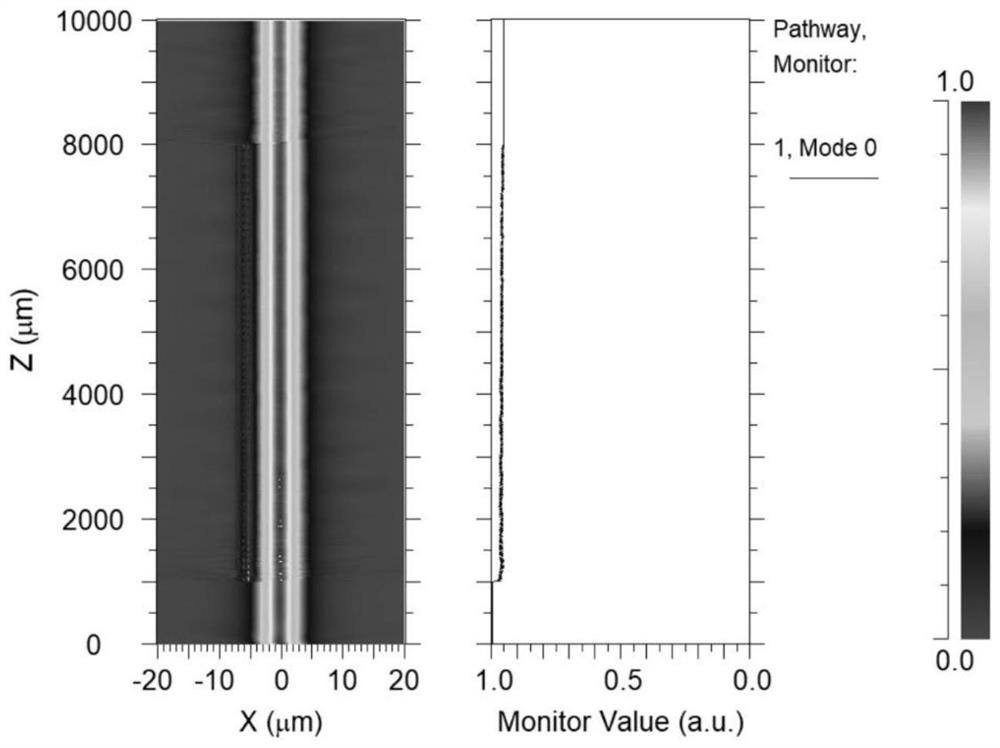Novel Optical Fiber Online Modulator Based on Lithium Niobate Thin Film
A lithium niobate and modulator technology, applied in the field of optical communication, can solve the problems of large optical fiber-lithium niobate thin film waveguide end face coupling loss, large insertion loss, poor stability, etc., to avoid end face coupling loss, reduce insertion loss, Stable performance
- Summary
- Abstract
- Description
- Claims
- Application Information
AI Technical Summary
Problems solved by technology
Method used
Image
Examples
Embodiment 1
[0041] Such as figure 1 Shown is the first implementation of the modulator provided by the embodiment of the present invention, such as figure 2 As shown, the thin-film lithium niobate waveguide is located directly above the fiber core; image 3 As shown, by controlling the vertical distance between the thin-film lithium niobate waveguide and the fiber core, and the cross-sectional size of the thin-film lithium niobate waveguide, it can be realized that most of the input light is transmitted to the output end through the fiber core when no voltage is applied to the electrode. A small amount of input light enters the thin-film lithium niobate waveguide and is eventually lost; as Figure 4 As shown, when a certain voltage is applied to the electrodes, the refractive index of the thin-film lithium niobate waveguide increases, and the transmitted light field will be more coupled into the thin-film lithium niobate waveguide. The optical field coupled into the thin-film lithium n...
Embodiment 2
[0049] In addition to using the above figure 1 In addition to the structure, the novel optical fiber online modulator based on thin-film lithium niobate waveguide proposed by the present invention can also adopt Figure 5 Shown in the second implementation, such as Figure 6 As shown, the thin-film lithium niobate waveguide is arranged at a certain distance away from the axis directly above the fiber core.
[0050] exist Figure 5 In the illustrated structure, by controlling the waveguide cross-sectional size and waveguide length of the thin-film lithium niobate waveguide at the input end, the optical field energy in the fiber core at the input end is coupled into the thin-film lithium niobate waveguide according to a specific ratio. By adjusting the voltage applied to the electrodes, controlling the phase of the propagating light field in the thin-film lithium niobate waveguide, and using the principle of interference, the intensity modulation of the light signal can also b...
Embodiment 3
[0058] The novel optical fiber online modulator based on thin-film lithium niobate waveguide proposed by the present invention can also adopt Figure 7 The third implementation is shown.
[0059] Such as Figure 8 As shown, the thin-film lithium niobate waveguide is fabricated as an MZI structure, and by controlling the waveguide cross-sectional size and waveguide length of the input-end thin-film lithium niobate waveguide, all the light field energy in the input-end fiber core is coupled into the thin-film lithium niobate waveguide . The MZI structure has two branches, and the phases of the transmitted light fields in the two branches are regulated by the tuning electrodes respectively. The two branches merge into one at the end of the MZI structure. At this time, the light fields in the two branches interfere, and the interference can convert the change of phase into the change of intensity. Finally, the light in the waveguide is coupled back into the fiber core and outpu...
PUM
 Login to View More
Login to View More Abstract
Description
Claims
Application Information
 Login to View More
Login to View More - R&D
- Intellectual Property
- Life Sciences
- Materials
- Tech Scout
- Unparalleled Data Quality
- Higher Quality Content
- 60% Fewer Hallucinations
Browse by: Latest US Patents, China's latest patents, Technical Efficacy Thesaurus, Application Domain, Technology Topic, Popular Technical Reports.
© 2025 PatSnap. All rights reserved.Legal|Privacy policy|Modern Slavery Act Transparency Statement|Sitemap|About US| Contact US: help@patsnap.com



